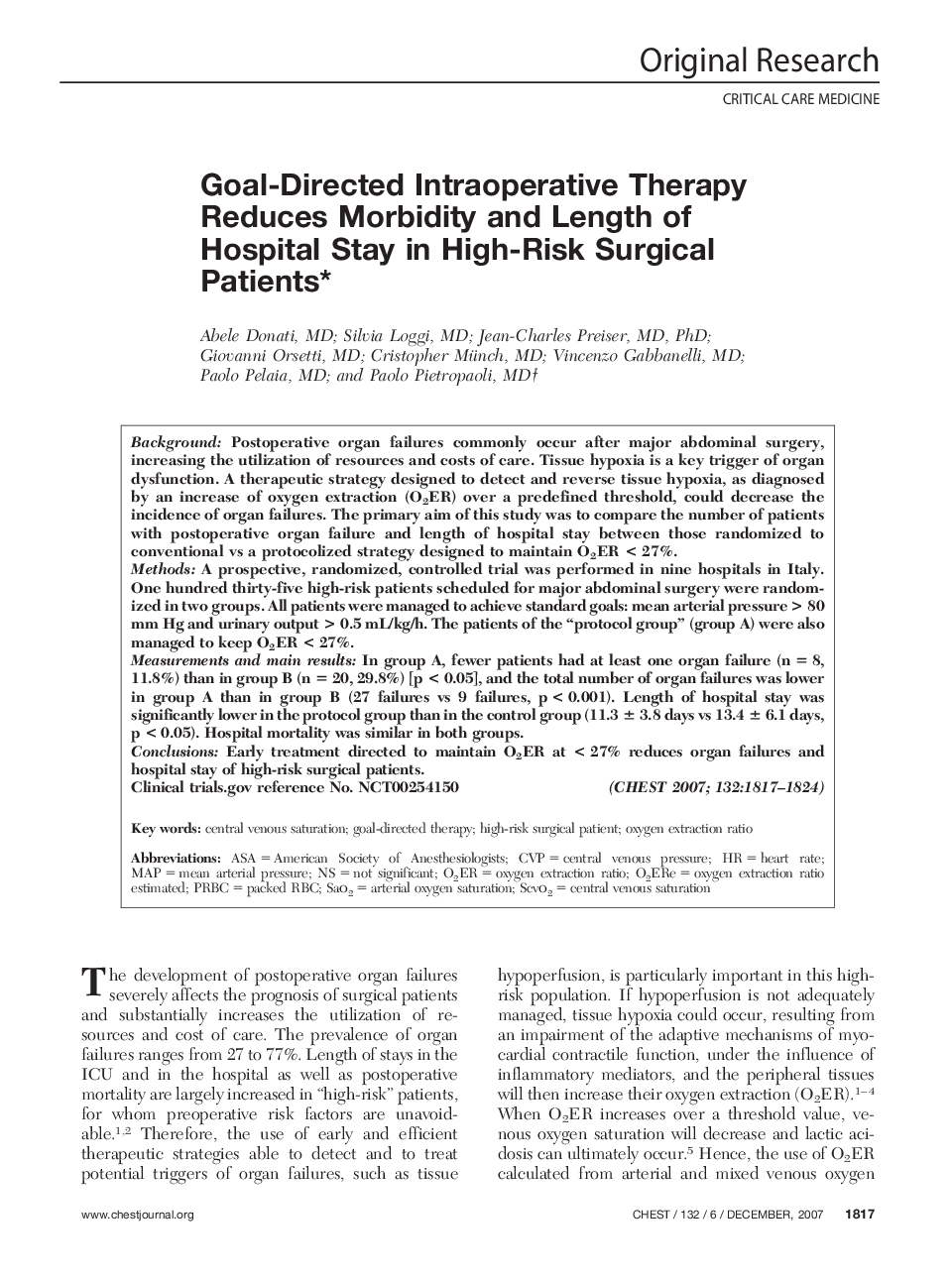| Article ID | Journal | Published Year | Pages | File Type |
|---|---|---|---|---|
| 2904329 | Chest | 2007 | 8 Pages |
BackgroundPostoperative organ failures commonly occur after major abdominal surgery, increasing the utilization of resources and costs of care. Tissue hypoxia is a key trigger of organ dysfunction. A therapeutic strategy designed to detect and reverse tissue hypoxia, as diagnosed by an increase of oxygen extraction (O2ER) over a predefined threshold, could decrease the incidence of organ failures. The primary aim of this study was to compare the number of patients with postoperative organ failure and length of hospital stay between those randomized to conventional vs a protocolized strategy designed to maintain O2ER < 27%.MethodsA prospective, randomized, controlled trial was performed in nine hospitals in Italy. One hundred thirty-five high-risk patients scheduled for major abdominal surgery were randomized in two groups. All patients were managed to achieve standard goals: mean arterial pressure > 80 mm Hg and urinary output > 0.5 mL/kg/h. The patients of the “protocol group” (group A) were also managed to keep O2ER < 27%.Measurements and main resultsIn group A, fewer patients had at least one organ failure (n = 8, 11.8%) than in group B (n = 20, 29.8%) [p < 0.05], and the total number of organ failures was lower in group A than in group B (27 failures vs 9 failures, p < 0.001). Length of hospital stay was significantly lower in the protocol group than in the control group (11.3 ± 3.8 days vs 13.4 ± 6.1 days, p < 0.05). Hospital mortality was similar in both groups.ConclusionsEarly treatment directed to maintain O2ER at < 27% reduces organ failures and hospital stay of high-risk surgical patients. Clinicaltrials.gov reference No. NCT00254150
